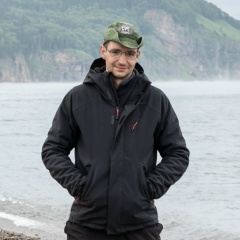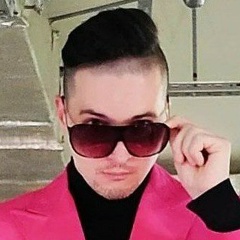Засыпая утром, я смотрел на двух мух, одна из которых, почему-то всегда летает у выключенной лампочки, а другая к первой пристает.
Я подумал, что по траектории мух можно судить об интенсивности их умственного процесса. Муха, если у нее нет цели, летает ровно по прямой, иногда довольно хаотично поворачивая и потом летя по прямой дальше.
Первая муха находится в режиме поиска и ищет что-то интересное. Прямая часть траектории нужна, чтобы осмыслить находящееся перед ней. После этого муха думает, что там ничего интересного и поворачивает в случайном направлении, после чего осмысливает то, что находится по новому курсу.
Вторая муха, приближается к первой по спирали, явно выбирая первую муху, как начало системы отсчета, с большим перерегулированием. Причем, мухина система управления явно не справляется с задачей следить первой мухой в тот момент, когда та хаотически менят направление. Второй приходится возращаться на исходные позиции и заново по спирали приближаться к первой. (Что наводит меня на мысль, что, возможно, прямая траектория является моделью полового поведения мух. Типа, чтобы на нее можно было "навестись.")
Это все, наверное, неправда, но забавно было в полусне придумывать зачем это все надо мухам.
Пойду помою посуду и схожу на мороженым.
Я подумал, что по траектории мух можно судить об интенсивности их умственного процесса. Муха, если у нее нет цели, летает ровно по прямой, иногда довольно хаотично поворачивая и потом летя по прямой дальше.
Первая муха находится в режиме поиска и ищет что-то интересное. Прямая часть траектории нужна, чтобы осмыслить находящееся перед ней. После этого муха думает, что там ничего интересного и поворачивает в случайном направлении, после чего осмысливает то, что находится по новому курсу.
Вторая муха, приближается к первой по спирали, явно выбирая первую муху, как начало системы отсчета, с большим перерегулированием. Причем, мухина система управления явно не справляется с задачей следить первой мухой в тот момент, когда та хаотически менят направление. Второй приходится возращаться на исходные позиции и заново по спирали приближаться к первой. (Что наводит меня на мысль, что, возможно, прямая траектория является моделью полового поведения мух. Типа, чтобы на нее можно было "навестись.")
Это все, наверное, неправда, но забавно было в полусне придумывать зачем это все надо мухам.
Пойду помою посуду и схожу на мороженым.
Falling asleep in the morning, I looked at two flies, one of which, for some reason, always flies off the light bulb, and the other sticks to the first one.
I thought that the trajectory of flies can be judged on the intensity of their mental process. A fly, if it does not have a target, flies exactly in a straight line, sometimes turning rather chaotically and then flying in a straight line further.
The first fly is in search mode and is looking for something interesting. The direct part of the trajectory is needed to make sense of what is in front of it. After that, the fly thinks that there is nothing interesting and turns in a random direction, after which it interprets what is on the new course.
The second fly, approaching the first in a spiral, clearly choosing the first fly, as the beginning of the frame of reference, with a large overshoot. Moreover, the fly control system is clearly unable to cope with the task of following the first fly at the moment when it randomly changes direction. The second one has to return to the initial positions and again spiral closer to the first. (Which makes me think that perhaps the direct trajectory is a model of the sexual behavior of the flies. Like, so that you can “hang around.”)
This is all probably not true, but it was amusing to think in a dream about why all this is necessary for flies.
I'll go wash the dishes and go to the ice cream.
I thought that the trajectory of flies can be judged on the intensity of their mental process. A fly, if it does not have a target, flies exactly in a straight line, sometimes turning rather chaotically and then flying in a straight line further.
The first fly is in search mode and is looking for something interesting. The direct part of the trajectory is needed to make sense of what is in front of it. After that, the fly thinks that there is nothing interesting and turns in a random direction, after which it interprets what is on the new course.
The second fly, approaching the first in a spiral, clearly choosing the first fly, as the beginning of the frame of reference, with a large overshoot. Moreover, the fly control system is clearly unable to cope with the task of following the first fly at the moment when it randomly changes direction. The second one has to return to the initial positions and again spiral closer to the first. (Which makes me think that perhaps the direct trajectory is a model of the sexual behavior of the flies. Like, so that you can “hang around.”)
This is all probably not true, but it was amusing to think in a dream about why all this is necessary for flies.
I'll go wash the dishes and go to the ice cream.
У записи 2 лайков,
0 репостов.
0 репостов.
Эту запись оставил(а) на своей стене Александр Беспалов























